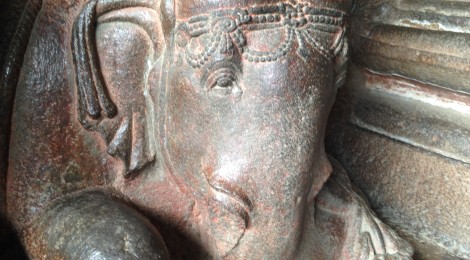
In Praise of the Jain Esthetic
India is bursting with visual stimulus. Bright ads on every building: red ads for Coke, yellow and blue ads for cement, a confusing collage of private school banners. The street is a jigsaw of shapes, with cows and cars and motorbikes and dogs and cycle rickshaws and children and trucks and tuk-tuks. The people are wearing a riot of saris and scarfs and sparkle shoes and sweaters and slacks.
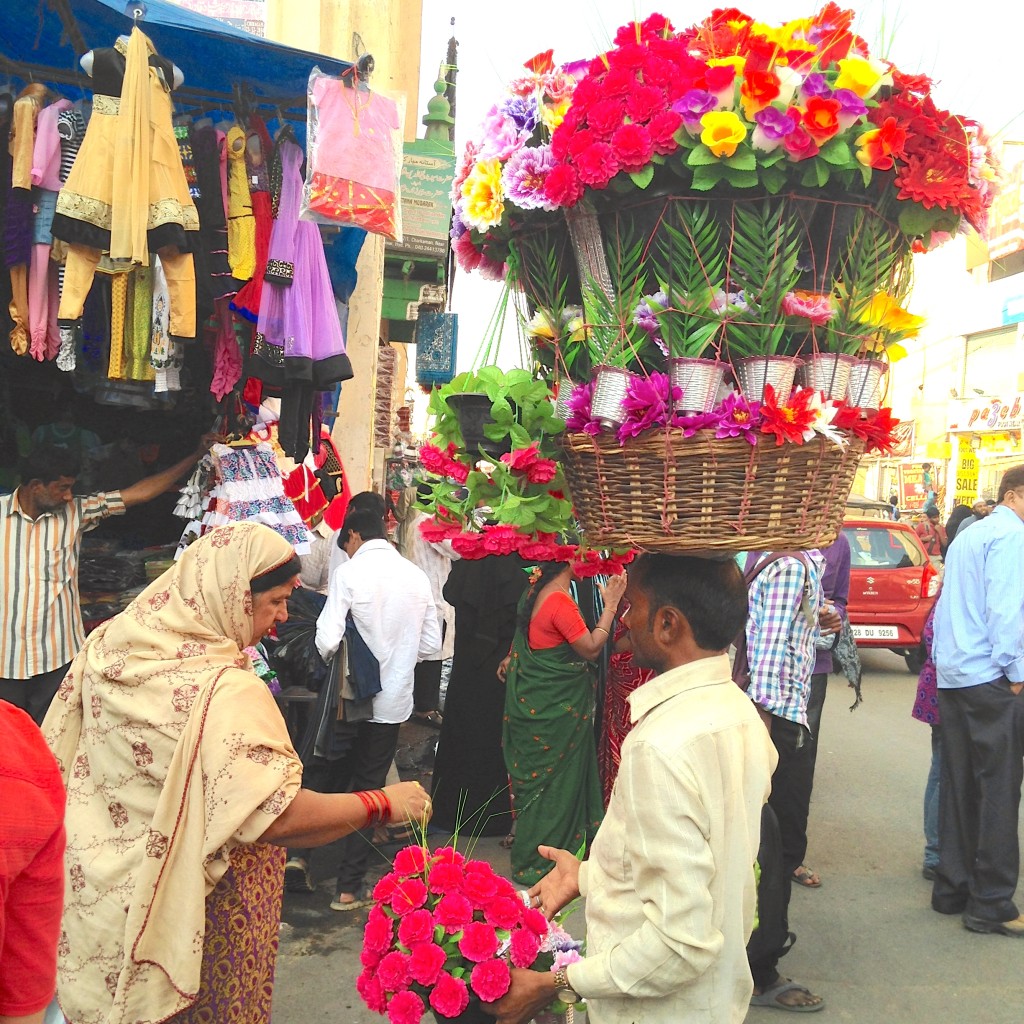
A taste of India’s visual chaos: a flower seller in Hyderabad’s Charminar district does business with a customer. And we’re getting off easy. This scene doesn’t contain signage or a cow!
Therefore I take notice when something forms a quiet pool in my visual field, a refuge from the visual chaos of this place.
So it is with Jain art, and I come to you today to praise the Jain esthetic.
Jain art arises from Jainism, an ancient religion of India still practiced by roughly 0.5% of the population. It is an old faith with artifacts dating back to the 9th Century, BCE. Mahatma Ghandi borrowed one of the central Jain philosophies: ahimsa is the Jain tenant of non-violence.
I praise the Jain aesthetic because it succeeds in artistic ahimsa. The sculptures of Jainism do no violence to the beholder’s eye. Quite the opposite, the lines and shapes are all invitingly smooth.
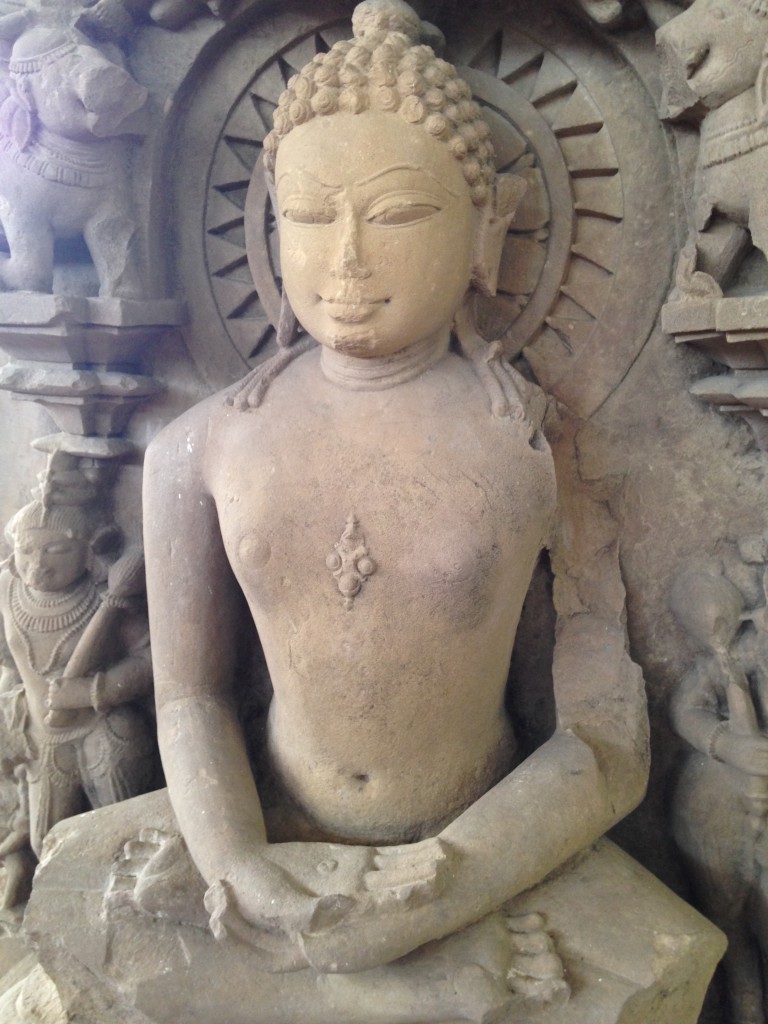
A sculpture of a Jain ascetic unearthed in Khajurhao. Calm. Sublime, peaceful lines. Not a whiff of disharmony: ahimsa all the way. How do you know it’s not the Buddha? The diamond in the middle of his chest is a flashing red light that you’re looking at a Jain figure.
A fundamental tenant of Jainism is that perfection exists within every living thing, and that the goal of life and worship is to reveal that perfection by throwing off the impurities of karma. Unlike Hinduism, where the best you can do is move up a notch or two in the next life, Jainsm asks its followers to attain what is possible in this life, right now. Since Jainism is about what people are capable of changing about themselves in the moment, Jain art idealizes flesh and blood, not deities with one hundred arms.
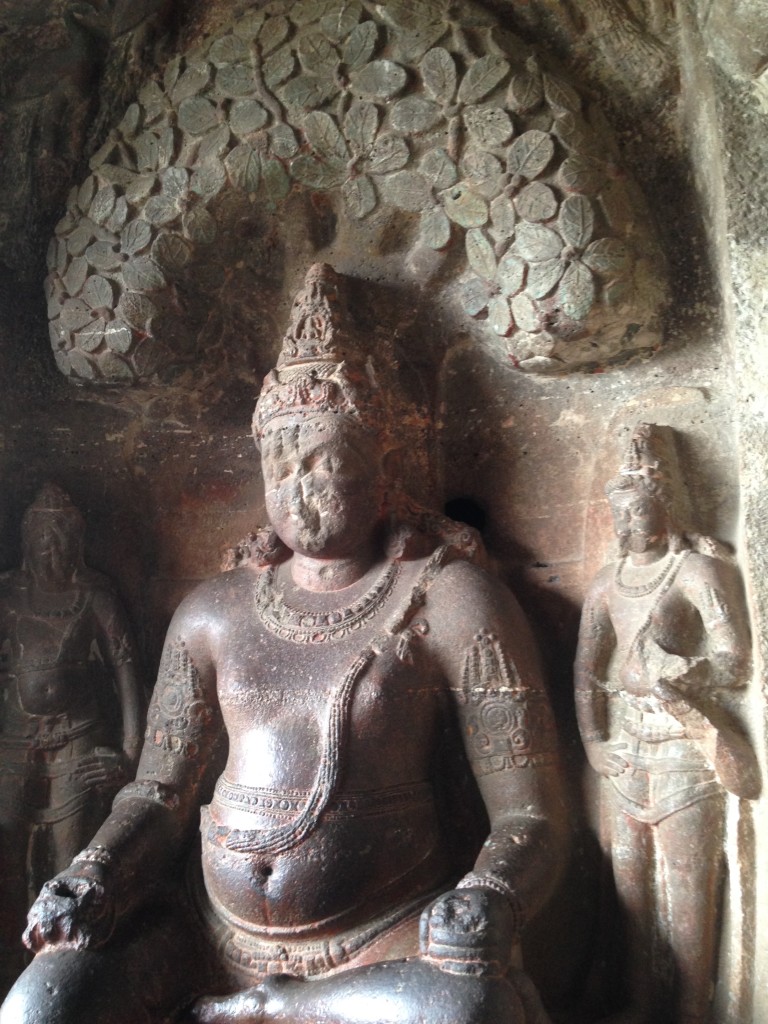
Beautiful, respectable, and pot-bellied: this cave carving in Ellora catches the eye both with the realism of the body and the honoring arc of the foliage.
I praise the Jain esthetic because it focuses on people, on human beings and what they are capable of in a single lifetime.

In this figure of an ascetic, we see male chest and genitals, but the narrow waist and leg shape have a female look to them. Click the picture for a magnified view.
We’ve visited three widely separated centers of Jain sculpture on this trip: the cave temples of Ellora, the Jain temples carved into the sandstone at Jaisalmer, and the Jain temples at the eastern edge of Khajuraho. In all three cases we’ve seen feminine features strongly represented in male figures. They have narrow waists above swelling hips, and legs without dominant representation of the quadriceps muscle in the front of the thigh. Alison rejects this as a weakness of the artists, but I am convinced we are seeing anekantavada, the fundamental Jain principle of non-absolutism expressed via representations of gender.
I praise the Jain esthetic because it succeeds at communicating some of its fundamental principles through the way it represents humanity, not just by the narrative created from assembling figures.
Instead of waxing on, I thought I’d let more of the sculptures speak for themselves.

A standing Jain figure carved into the gold sandstone of Jaisalmer Fort. In this case the diamond in the middle of the chest is actually painted red. The entire carving (it’s roughly five feet tall) has been given a glassy polish, making it a point of focus in the shadows of the temple.
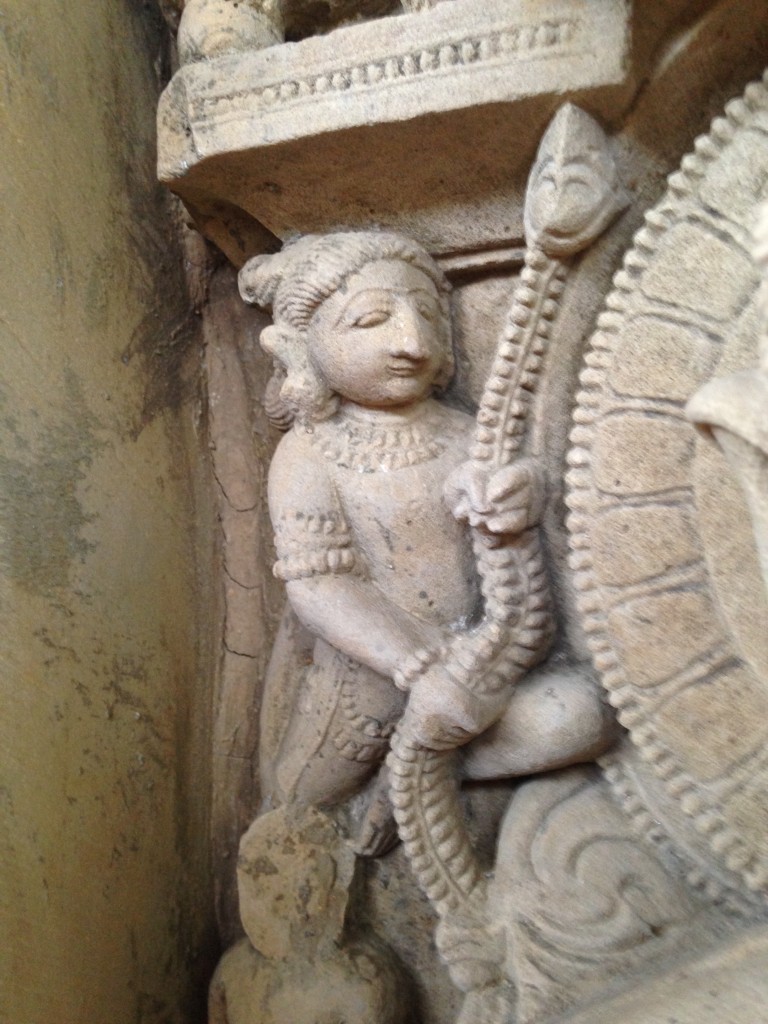
Even small, supporting figures get the full treatment in Jain art. This little guardian figure from Khajurhao has very lifelike proportion and position. And that nose! It’s certainly not the schnoz of an artist caught up in typical ideals of perfection.
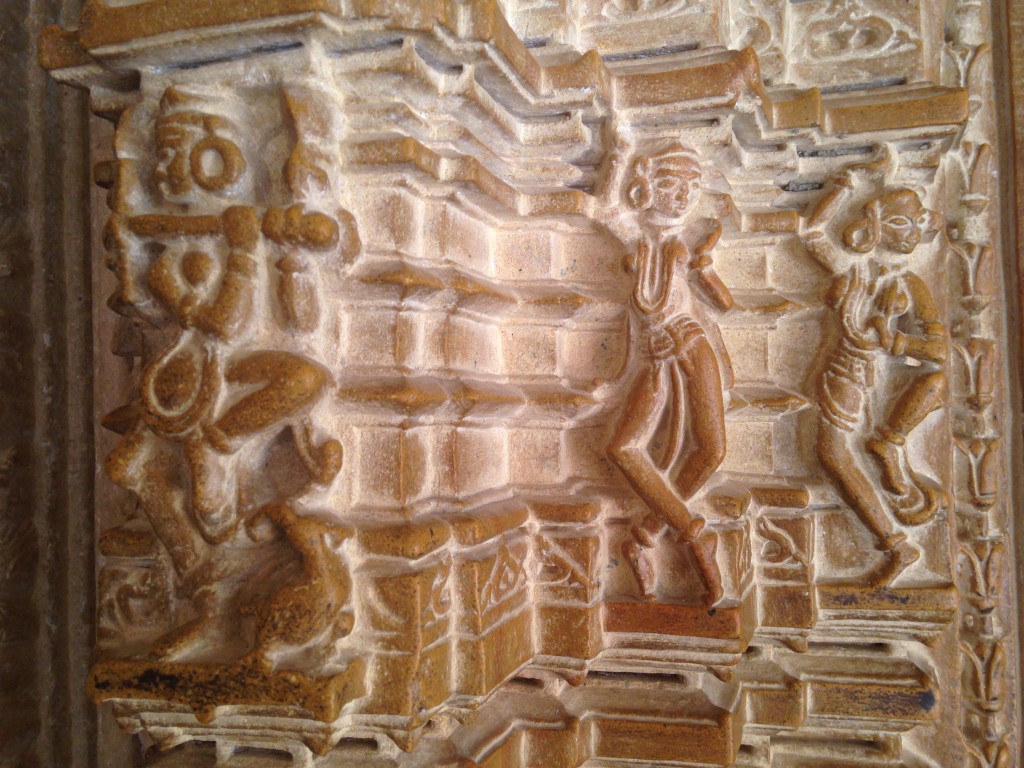
Even most minimal Jain carvings have a lovely expressiveness. This trio from Jaisalmer–a flute player on the left, a dancer in the middle, and a drummer on the right give us music and fluidity with a minimum of lines and detail and fuss.
Hypnotized by the esthetics of ascetics,
Chris
Recent Comments